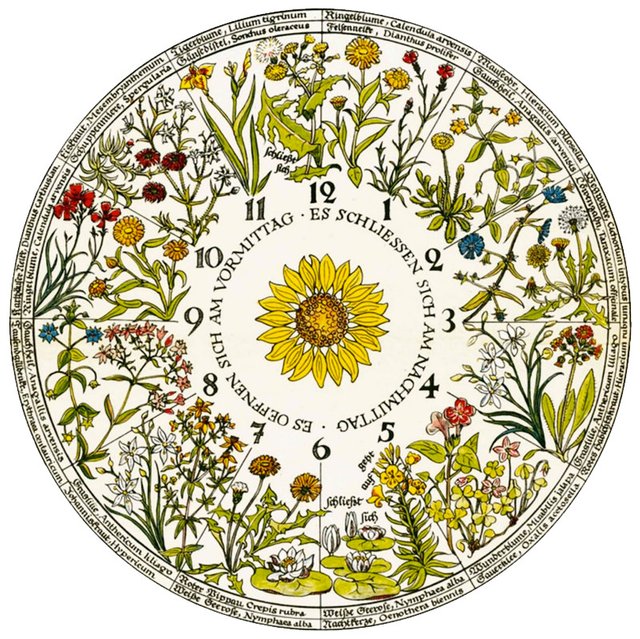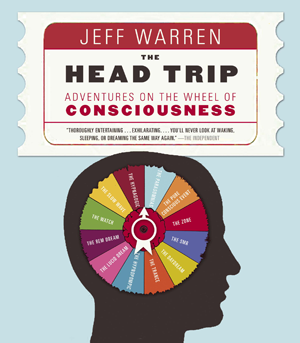"When the Hawkweed Blooms," in Lackington's 21
My very first short story was published by the Canadian semiprozine Lackington’s last week. It’s pretty much “hard” science fiction, meaning that the science and tech in it are if not real, at least realistic. I want to take the opportunity today to expand on two of the ideas from that story.
Flower Clocks
The time stamps and plant names that head each scene are not random. Naturalists for hundreds of years have been noticing that some plants can tell time, opening and closing their flowers at specific times of day. For instance, my wife planted a lot of milkweed in our yard to attract Monarch butterflies during their migrations. This year I started paying attention to their rhythms and found that they tend to open around noon. It depends on the weather somewhat — they seem to open later on cloudy days. Because milkweed seeds blow away on the wind, if I want to harvest those seeds, I need to be there right when the flowers open. That fact was on my mind as I was writing the story.
Other authors have proposed planting “flower clocks,” gardens that bloom on the hour the way a clock chimes. Taken together, that’s what the title and the flowery headings in the story represent — a flower clock. I combined a few different suggested sequences because I wanted different colors at different times of day, and because some of the names sounded better rolling off my tongue than others. I like the audio fiction podcast Escape Pod, where they get professional narrators to read SF stories. It’s an ambition of mine to hear something I wrote on that show. They do produce reprints, but at only 1600 words this one is probably too short for them. Maybe I could lengthen it by including some public domain poetry.
How well the skilful gardener drew
Of flow'rs and herbs this dial new;
Where from above the milder sun
Does through a fragrant zodiac run;
And, as it works, th' industrious bee
Computes its time as well as we.
How could such sweet and wholesome hours
Be reckoned but with herbs and flow’rs!
-Andrew Marvell, “The Garden”
The Watch
The chronobiology theme is echoed in the risings and fallings of various hormones in the characters. When the story opens, it is early in the morning, and the narrator Mateo is awake, feeding his daughter Glory. I specifically mention prolactin, the hormone that causes the release of milk from the mammary glands. It also causes changes in mood and thought, which are not well-characterized outside of the research literature. The same is probably true of every other hormone out there. I know it’s true of insulin, from every time I get hangry.
My favorite book on this topic is The Head Trip, by Toronto-based meditation teacher Jeff Warren. It is deeply researched but also reflects Jeff’s quirky sense of humor (including hand-drawn cartoons!). I met him at a retreat in New Mexico and used a previous version of the book’s website as a classroom resource for years before I finally found a copy of the book, which is sadly out of print now (support your local library!). Jeff organizes a dozen or so different mental states into a Wheel of Consciousness, which more or less lines up with the flower clocks. He calls the nightly peak in prolactin The Watch, which sounds much cooler than “that time between First Sleep and Second Sleep.” The mental states cycle through a more or less predictable schedule, in semi-synchrony with the rise and fall of various hormones, though of course correlation is only the first step of proving causation.
Before electric lights kept us up so late, “First Sleep” and “Second Sleep” were common knowledge. Now, most Americans are so sleep-deprived that we don’t fully wake up during The Watch, or else we assume it’s a problem and call it insomnia, and further screw up our circadian rhythms with sleeping pills. I became serious about sleep hygiene after I became a father, and I realized that I was a better parent — more patient, more stable emotionally — when I was well rested. Getting enough sleep restored the midnight awakenings. It took me years to accept them as normal, but once I did I started to use them as times to write (like I’m doing right now), or to do sitting meditation.
As a society, we’ve been on a several hundred year long detour of treating the mind and the body as separate things. One minor consequence of that detour is the body-switch trope that pervades popular culture. It’s so common that TV Tropes calls it an Obvious Joke, and it happens to have been the subject of my very first column for The Intergalactic Medicine Show, almost 5 years ago. I wrote about 40 of those, and at the rate I’m selling stories vs articles, it will be quite some while before I dare to think of myself as a fiction writer.
Thanks for reading!
REFERENCES
https://lackingtons.com/issues/issue-21-spring-2020/
https://tvtropes.org/pmwiki/pmwiki.php/Main/MohsScaleOfScienceFictionHardness
https://en.wikipedia.org/wiki/Linnaeus%27s_flower_clock
https://www.nytimes.com/2015/01/29/garden/planting-a-clock-that-tracks-hours-by-flowers.html
https://blogs.scientificamerican.com/a-blog-around-the-clock/carolus-linnaeus-floral-clocks/
https://jeffwarren.org/books/the-head-trip/
http://www.intergalacticmedicineshow.com/cgi-bin/mag.cgi?do=columns&vol=randall_hayes&article=001

